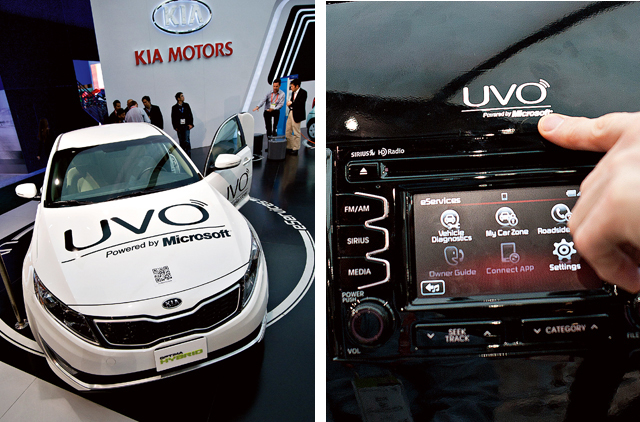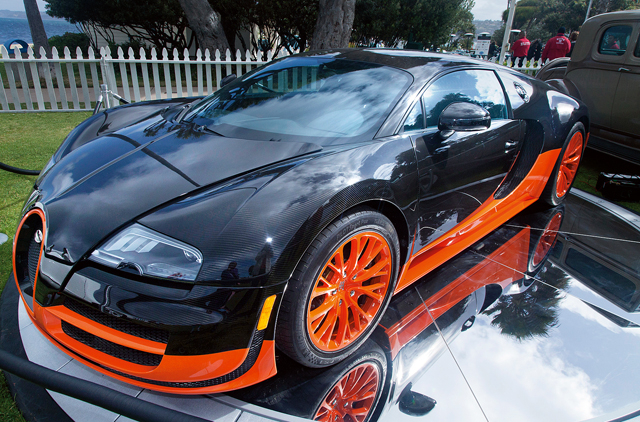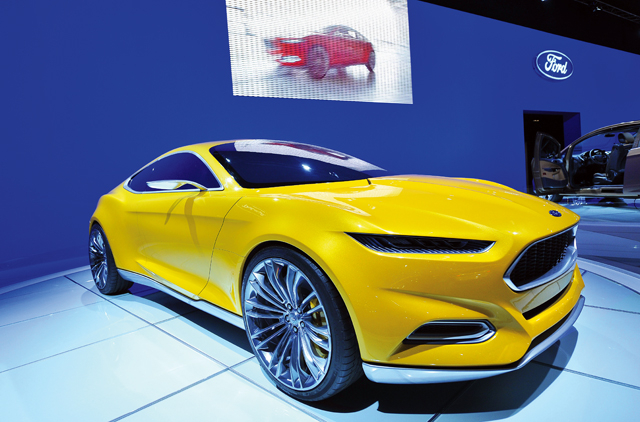
Electric cars
People have criticised electric cars so far by saying they aren’t fast enough, don’t have the range, and there simply aren’t enough charging points. BMW has ignored all of that and designed one that will easily become popular just because of how good it looks.
The i8 Spyder Concept is a taste of what could be, with a foldaway roof, swan doors and a lightweight carbon shell. That should sort the speed issues, while the clever management system gets better range and performance from the lithium-ion battery than the norm. The result is 0-99 in five seconds and a top speed of 249kph.
Point and move
Mercedes-Benz has taken a leap into the future with a system that appears to be straight out of the script of Minority Report or Iron Man. Its Dynamic and Intuitive Control Experience (DICE) projects information on to the windscreen thanks to an augmented reality interface – which hopefully isn’t too much of a distraction for the driver.
It also uses motion sensors to detect hand movements, so the driver can point at a passing building to receive information about it. For example, with an art gallery, it might tell you its name and opening times. If it’s a restaurant, you might be able to peruse the menu or even make a booking.
This system is said to control social media, entertainment and vehicle diagnostics in the same way. Think about it, you’ll be able to update your facebook status in a traffic jam - while keeping your eyes on the road, of course.
Self-driven cars
Web giant Google has been working on a driverless car for a while – fitting a fleet of vehicles in the States with video cameras, radar sensors, lasers, GPS and an onboard database. The result is a car that can detect the traffic around it, and will be aware of its location at all times – there are many applications, from taxis to assisting the visually impaired.
Nevada became the first state in the US to legalise these self-driven cars recently, and California could be next. Its state senator, Alan Lowenthal, quipped modestly, “There are still some issues, but it’s a better driver than I am.”
Future navigation
Korean car manufacturer Kia has figured out that if you fit a car with navigation and GPS, you might be able to get even more out of it than simply finding your way on the road. The brand’s latest Uvo system, built in conjunction with Microsoft and unveiled recently, can liaise with your smartphone to direct you back to your car if you forget where you parked it, or it can call the emergency services and ping them your location in one hit at the push of a button. It can also transfer directions from your smartphone that you’ve worked out using Google Maps.
Lighter load
Making cars lighter is one way that manufacturers can get more mileage out of their vehicles, so they are turning to carbon fibre, the ultra-light, super-tough material found in aeroplanes and modern tennis rackets. Lightweight carbon fibre pieces will be featured on many upscale vehicles, like BMW’s forthcoming line of electric cars, which will hit the road in 2013. Although manufacturing the material is costly now, prices will come down as advances in manufacturing are made. Using carbon fibre to reduce a vehicle’s weight could improve fuel economy by as much as 7 per cent.
Communicative cars
Ford, ever the innovator, is currently developing an intelligent vehicle system that uses Wi-Fi technology to transmit your car’s location and recognise vehicles in its vicinity. The system will warn you of any oncoming traffic when, for example, you want to pass a large lorry that is obstructing your view on a narrow road, or tell you when a vehicle several cars ahead has stopped abruptly. It’s unlikely this technology will be available for at least another five years, and it’ll be much longer than that before it is standard.
















